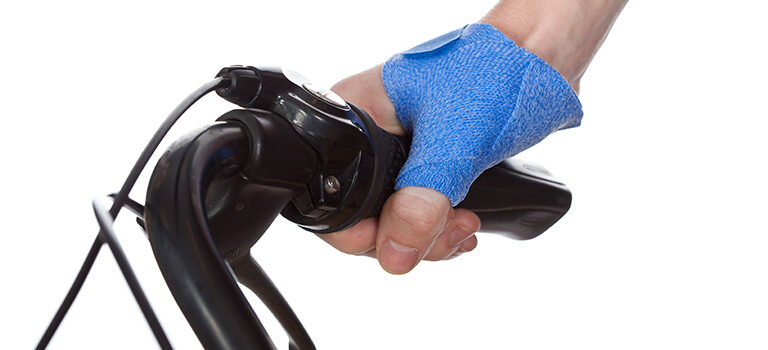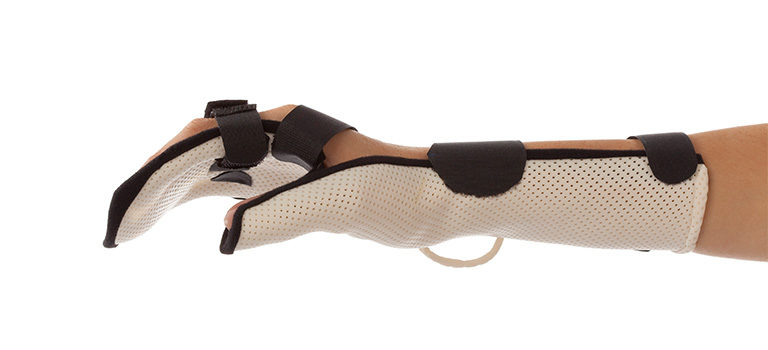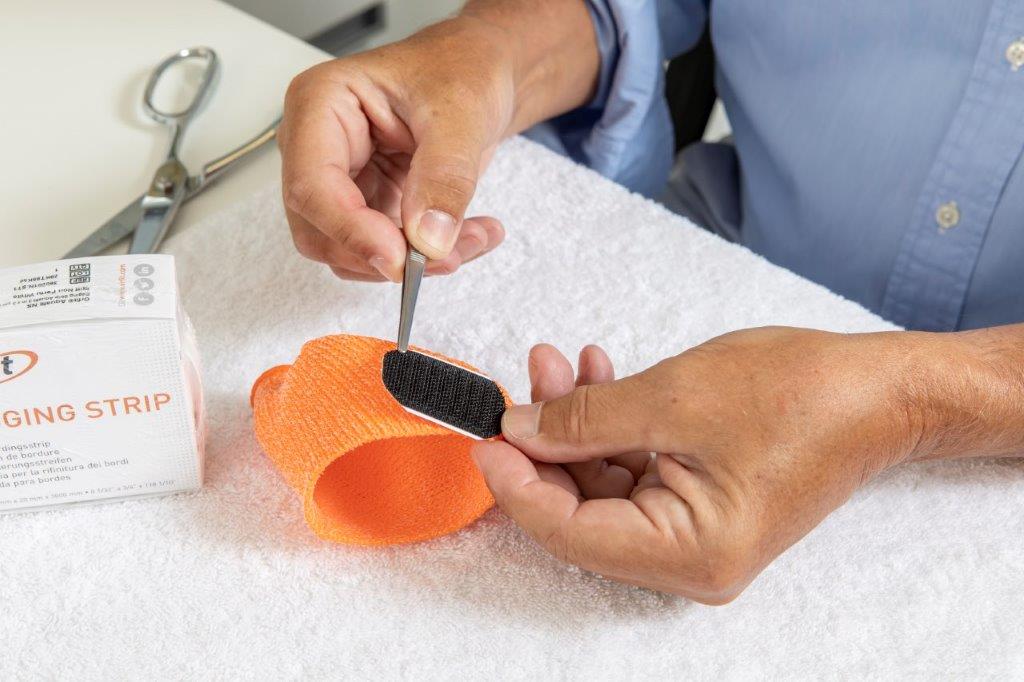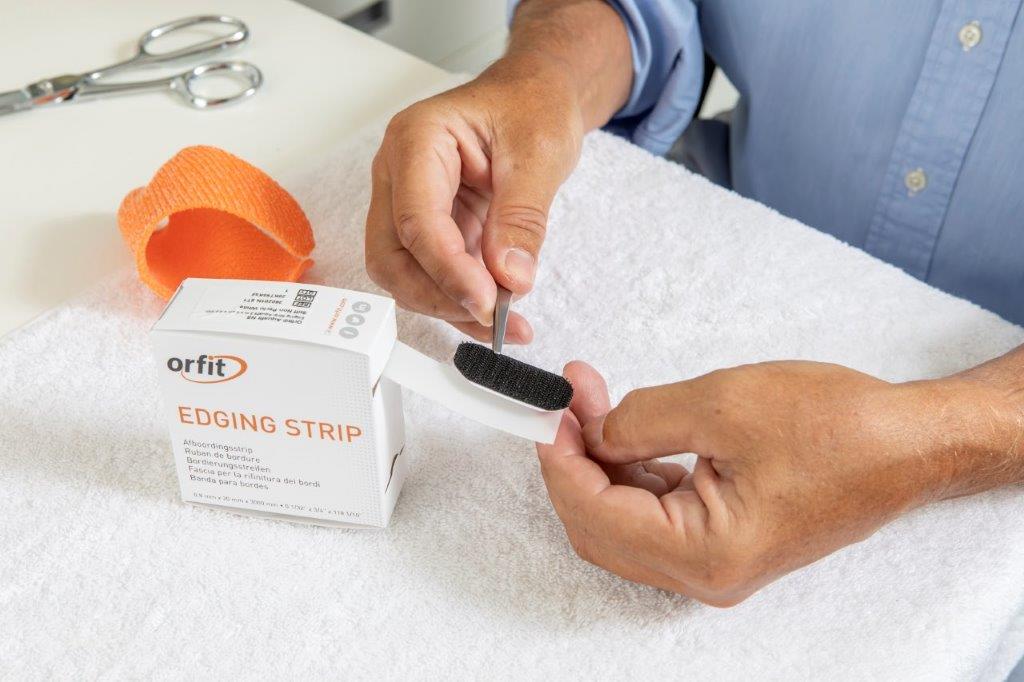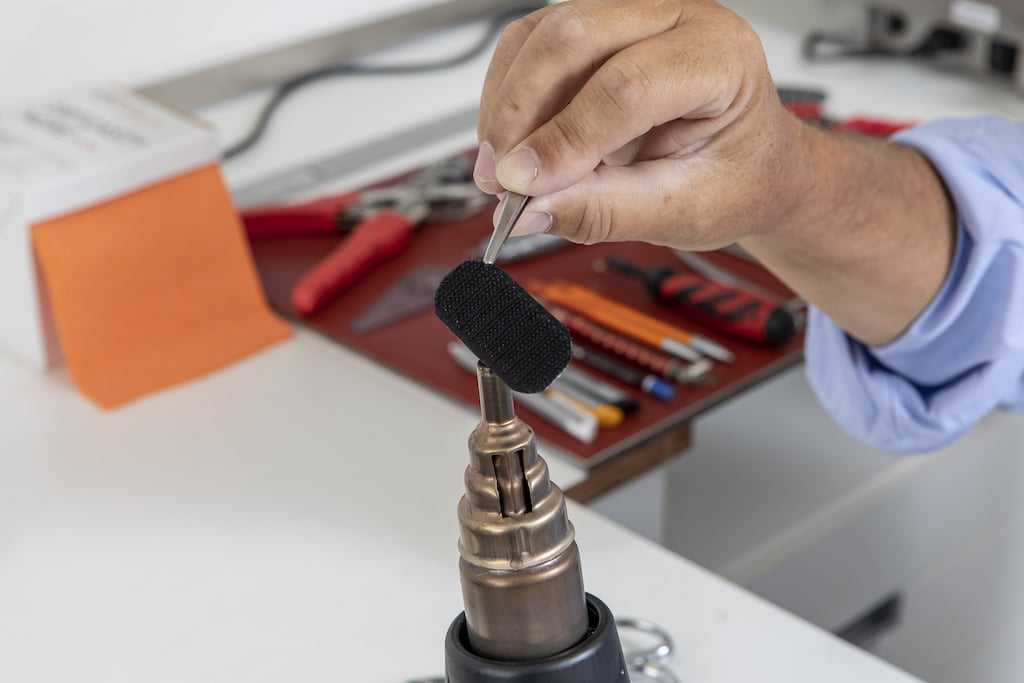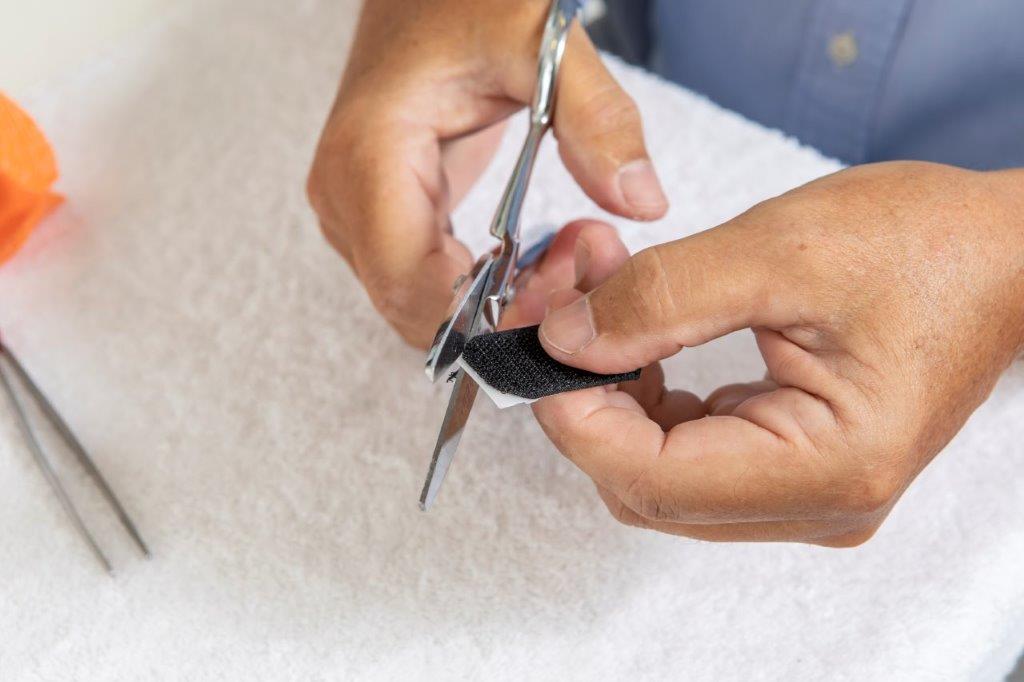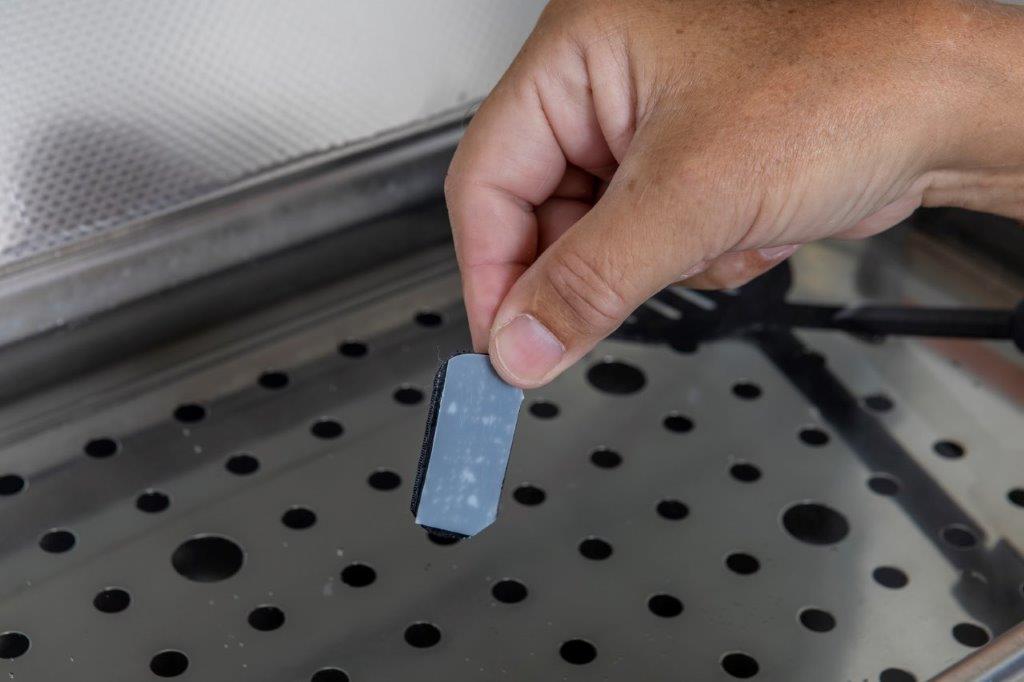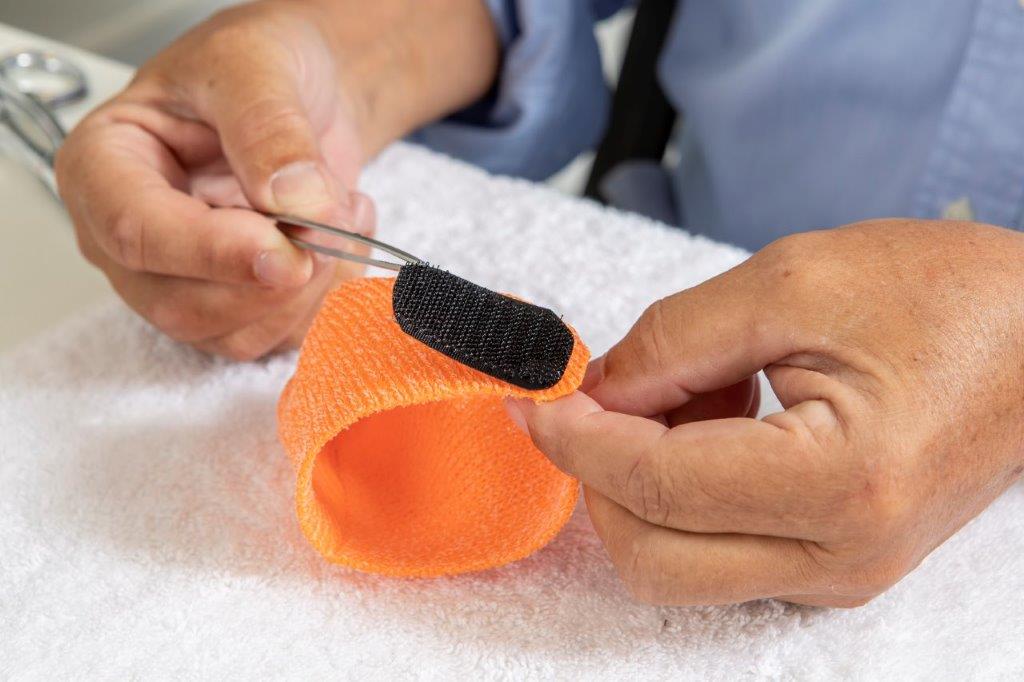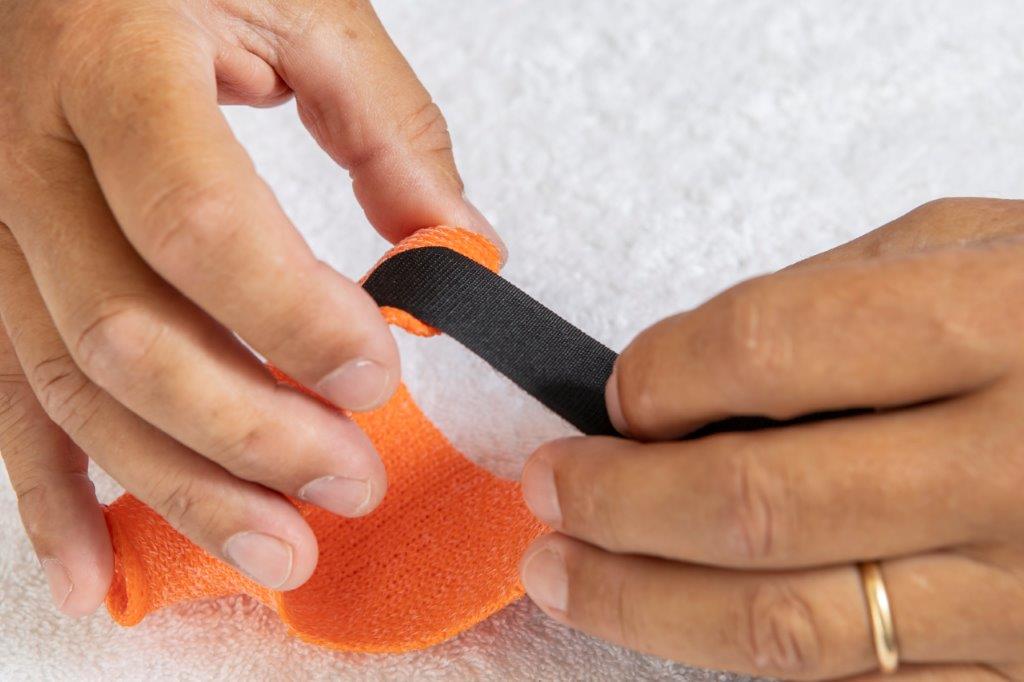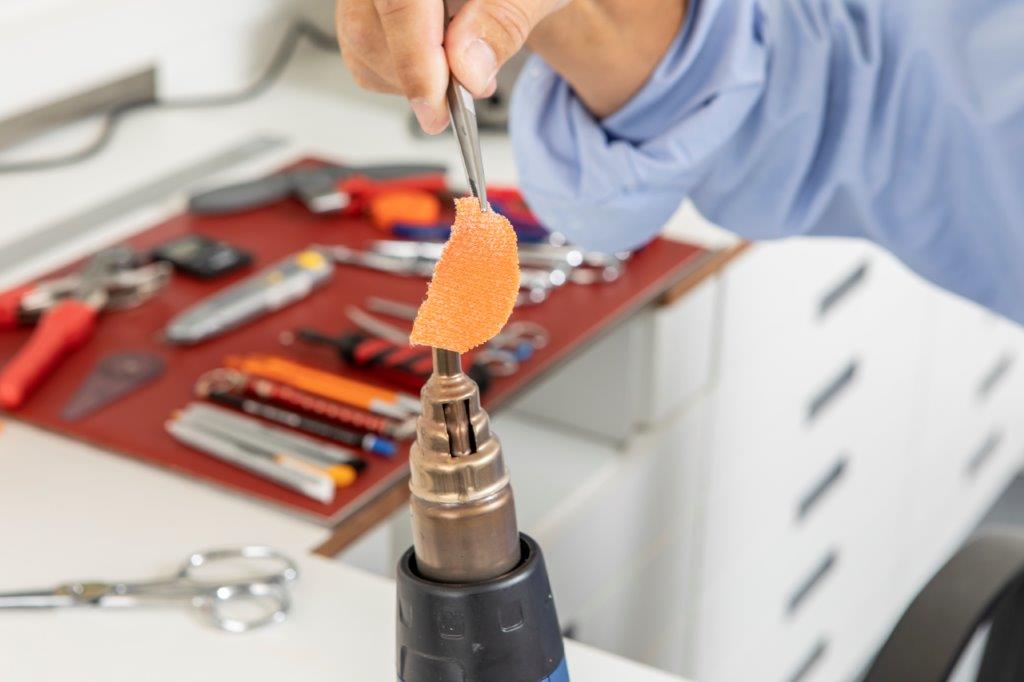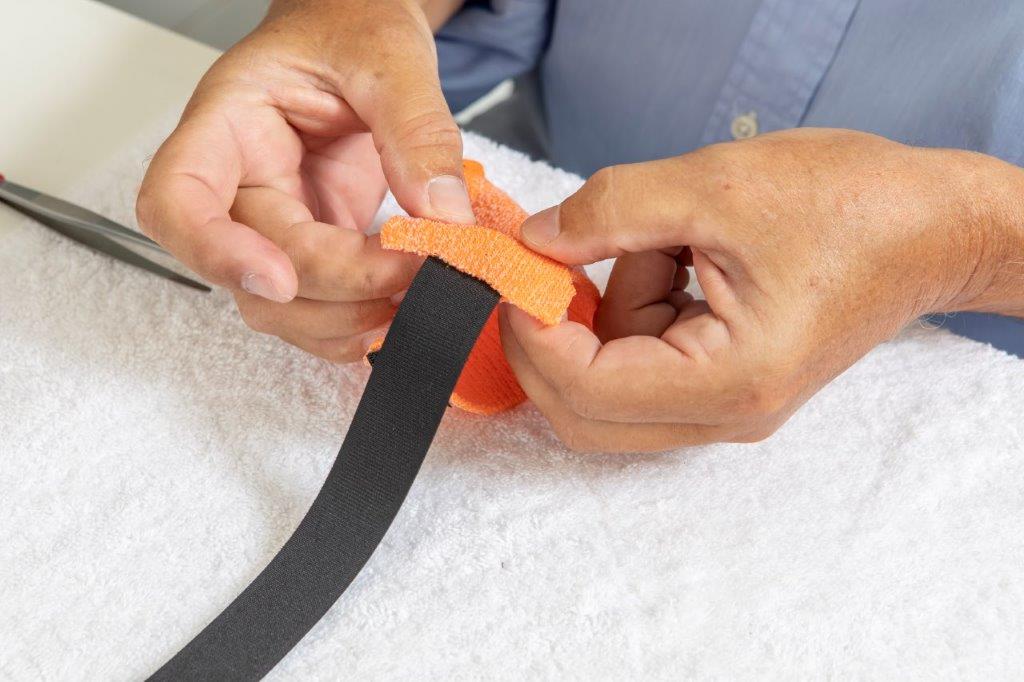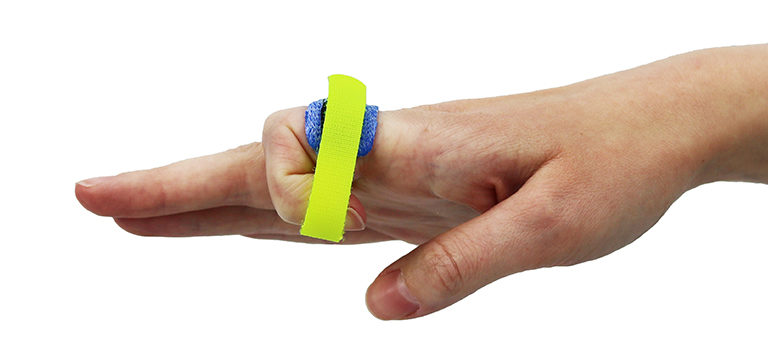
New Technique for Attaching Hook-and-Loop Straps to Orficast
Attaching straps with the help of Edging Strip
Here is a new, quick and easy method to attach hook and loop (e.g. Velcro) straps to Orficast. We will be using an unexpected ally for an unbreakable bond: Thermoplastic Edging Strip.
The Edging Strip is a roll of super-thin low-temperature thermoplastic material, traditionally used to line the edges of an orthosis. This strip material will bond quickly to Orficast, even if it’s still damp. A perfect tool to attach straps to Orficast!
You will need:
- Orfit edging strip
- Loop strap
- Adhesive-backed hook
- Orficast scraps
- Heat gun
- Scissors
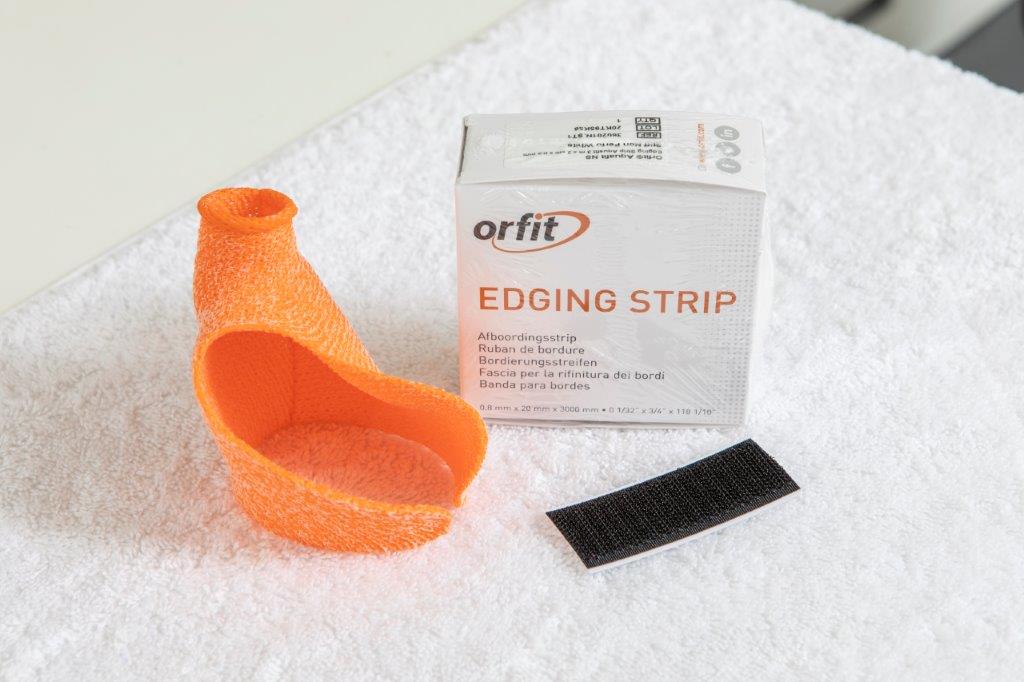
How to:
Step 1: Prepare a piece of adhesive-backed hook and a similar-sized piece of Orfit Edging Strip.
Step 2: Heat up the adhesive glue side of the hook briefly with the heat gun and attach to the Orfit Edging Strip. Trim the corners.
Step 3: Place this combination in the water bath and let the Edging Strip become transparent. Once ready, attach the hook strap firmly to the molded orthosis.
Step 4: Briefly heat up the other side of the orthosis with the heat gun and press the fuzzy side of the loop strap directly into the heated thermoplastic.
Step 5: Use the heat gun to heat up a small scrap of Orficast material and place it on top of the loop strap to reinforce its attachment. If necessary, trim the excess scrap material for a neat finish.
The orthosis is complete!
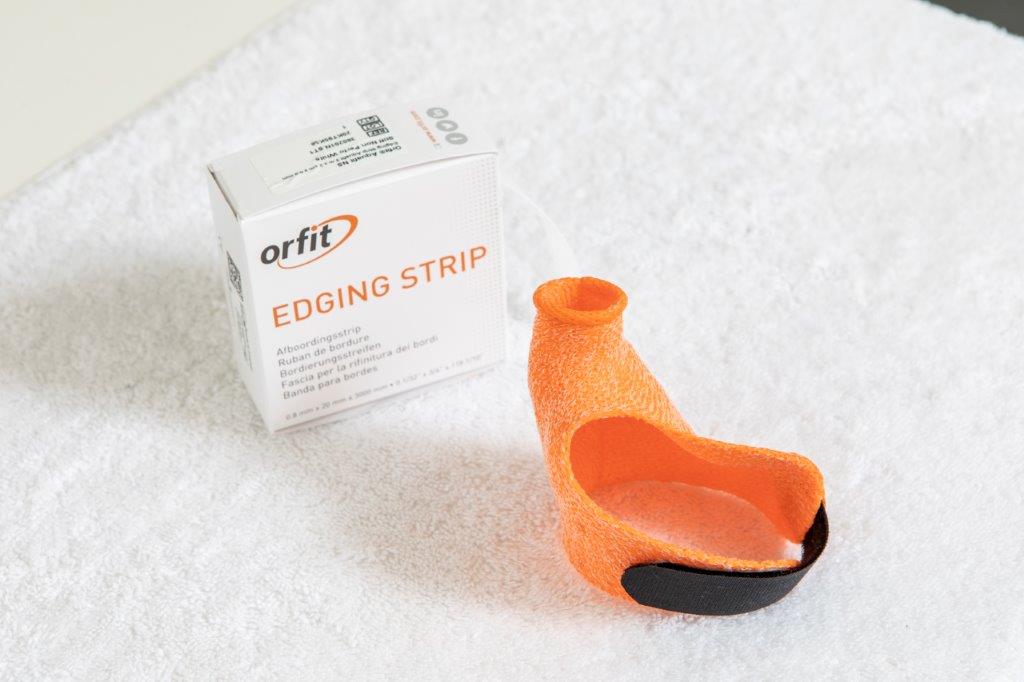
In conclusion
So all it takes are 5 simple steps to perfectly attach straps to Orficast. With this method, you can send your patients home and rest assured that the straps will stay right where you placed them. Let us know how it goes!
Are you looking for more splinting tips and tricks? Then the Orfit Academy is your place to be! On this virtual educational platform, we provide numerous Orfit Splinting Courses on a wide range of orthotic fabrication topics. Create your profile for free on www.orfit.com/academy.
![]()

Written by Debby Schwartz, OTD, OTR/L, CHT
Physical Rehabilitation Product and Educational Specialist at Orfit Industries America.
Debby is a certified hand therapist with over 36 years of clinical experience. She completed her Doctorate of Occupational Therapy at Rocky Mountain University of Health Professions in 2010. She has worked at Orfit Industries America as Product and Educational Specialist since 2007.
Debby is also an adjunct professor at the Occupational Therapy Department of Touro University, School of Health Sciences, and at the Occupational Therapy Department at Yeshiva University, Katz School of Science and Health in NYC. She has written many book chapters in the field of hand therapy and multiple articles for hand therapy journals, including the ASHT Times and the Journal of Hand Therapy. She has published a new textbook on orthotic fabrication together with Dr. Katherine Schofield, entitled “Orthotic Design and Fabrication for the Upper Extremity: A Practical Guide”.
![]()
If you’d like to receive the latest product updates and interesting Orfit news, subscribe to our newsletter:

